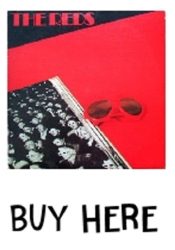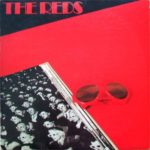
Album & Gig Reviews ↓
Chuck Eddy, Stairway To Hell
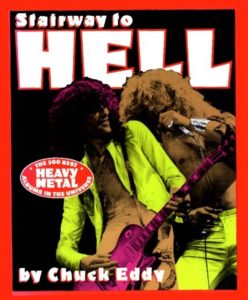
Pennsylvania roughnecks who’ve got a chemistry class and want a piece of your ass, The Reds sometimes button their white collars at the top yet their riff-and-organ tones are so garbagey that upon initially hearing Self Reduction on an AOR station (back when AOR still played such stuff) I thought somebody’d finally knocked some sense into Deep Purple’s heads. So how they passed as anorexic-cravat new-wavers beats me. Rick Shaffer spits his bitter banter rapid-fire as often as not, yelping at wrongness everywhere. There’s more drone hooks and less supernumerary frills and flurries here than on their later invisible-label follow-ups ― Lookout is a seven-minute tower of power that would’ve made these bombastically pessimist miniaturists the new Iron Butterfly if A&M would’ve given ‘em a real shot; Whatcha’ Doin’ To Me is Jimmy Page pogoing payback on Sid’s grave’ and the other perturbitude is compressed but complicated, not so much “arty” as just impatient. Sorta like if Joy Division had come from a Philly suburb instead of some stupid factory burg in Blighty.
- Chuck Eddy, Stairway To Hell ― The 500 Best Heavy Metal Albums In The Universe ©1991, The Reds ― #279 ― Page 130
Kurt Loder, Rolling Stone

On their debut album, The Reds prove themselves capable of kicking up as much of an urban art-rock ruckus as any band this side of Pere Ube. What makes their jittery, raw-edges electronic sound so engaging is the clarity of their instrumental constructions and the solid simplicity of their song writing. Though spending an hour with The Reds may be the aural equivalent of assault and battery, you’re likely to totter away from the scene of the crime humming their tunes.
Together for only two years, The Reds have individual musical histories that considerably predate the New Wave movement with which the Philadelphia band is likely to be lumped. So it’s no surprise that some of Rick Shaffer’s lead vocals contain echoes of Mick Jagger (Talking and Lookout), as well as Patti Smith and Tom Verlaine. Whiffs of vintage psychedelia drift by too, and there’s an almost Deep Purple-ish sense of raving riffery in the scorching Watcha’ Doin’ To Me. Shaffer’s guitar, and Bruce Cohen’s inventively nasty keyboards, meld into a single brutal drone in most cuts, with Jim Peters fat bass, and Tommy Geddes’ monolithic drums punching the songs home.
The Reds don’t have any obvious pop pretensions, but their music has a classic grabbiness that’s all the more enjoyable because it’s totally unexpected. Victims, the LP’s opening thrasher sucks you right in with its straightforward four-note keyboard hook, while the plunkety riff in Self Reduction sticks like a well-aimed shiv.
Producer David Kershenbaum (who works with Joe Jackson) has captured the band’s tense balance of aggression and amiability with commendable objectivity. But these guys need no interpretive knob-twiddling to make their message clear. If this record is any indication, a whole lot of people may soon be seeing Reds.
∎ Kurt Loder, Rolling Stone, 1979
Robert Palmer, Penthouse, Sounds

The Reds are to these ears the best of the batch. They’ve also had a lot of trouble getting radio play. It’s true that their rhythm tracks sound like exquisitely recorded white noise, and that lead vocalist Rick Shaffer is a screamer, but those are strong melody lines he’s screaming, and the group’s playing has an urgency and power that none of these other bands approaches.
Unconditionally recommended.
- Robert Palmer, Sounds, Penthouse, 1979
FYI: Some of the “none of these other bands” that Mr. Palmer refers to in his Reds review were: The B-52’s, The Knack, The A’s, The 20/20, The Laughing Dogs, The Members, The Only Ones, The Pop, The Records.
Robert Christgau, Creem Magazine

My conscience says to dock this a notch for incipient pretensions and general meaninglessness, but my memory reminds me that, despite indecipherable lyrics and a few overblown instrumental passages, both sides have provided me with the basic hard rock rush again and again. Signature: high hook over frantic mid-range guitar. B+
Robert Christgau, Creem Magazine, Christgau Consumer Guide, 1979
Ralph Heibutzki, All Music Guide

Philadelphia’s Reds cast a powerful shadow over their late ’70’s and early ’80’s albums, which were too gut-crunching for the new wave crowd, but not flashy enough for the metal-heads weaned on the genre’s instrumental pyrotechnics. Guitarist and front man Rick Shaffer’s lyrics often seemed too intense for the narrowness of Top 40 radio, which gave little time to tracks like Lookout, his nearly seven-minute scream against complacency. That’s a shame, since Shaffer and his bandmates are smart, accomplished players. Keyboardist Bruce Cohen consistently spices up the proceedings with unobtrusive, yet effective, organ and synthesizer blasts. Bassist Jim Peters, and drummer Tommy Geddes stake their own claims, playing as lead instruments when necessary, and pulling back when the song demands it: the old criticism of “more attitude than capability” doesn’t stick here.
Like most debuts, the Reds’ first album is a short, sharp-shock, show-’em-what-you-got affair, although not solely dependent on sound and fury to put its points across. Shaffer mainly preoccupies himself with relationships; judging by Victims, Luxury, and Over And Over, he’s not having much luck. The most powerful salvos come last, with Lookout on side one, while the disaffected Self Reduction brings the album to a powerful close.
However, mainstream listeners didn’t get the point, so the Reds’ stay at A&M proved a brief one (although Shaffer and Cohen — who’ve since moved into TV and film soundtracks — continue to record as a studio-only unit). Still, the heaviness and emphasis on inner conflicts shouldn’t put off anyone searching for some truly intense, yet intelligent music.
- Ralph Heibutzki, All Music Guide, 1979
Cary Baker, Trouser Press

Recipients of cult renown, via a self-released single last year, The Reds hit upon a sound that rocked like the Cars, yet was as austere as BOC, and cloying as Iron Butterfly. The 45 was ominously on-target and laughably inept — almost simultaneously — yet made Reds freaks of all who heard it.
Producer Davin Kershenbaum brought The Reds’ sound to fruition — commercial, yet comfortably in the red. The riff-centered and synth-iced sound of their single has become the rule here. Songwriter/vocalist Rick Shaffer writes with the severity and lyrical pentameter of Tom Verlaine. The difference between The Reds and Television, however, is in the fleshing out process. If Verlaine recorded Luxury it would sound foreboding despite the lyric’s faint optimism. The Reds, on the other hand, run a few volts of Pere Ubu undersea cable electronics through, and the result almost qualifies for AOR. Only Joey, previously the A-side of another self-released 45, ultimately convinces, combining a political thrust with shades of Friction. The chilling result sets the tone for this most resolute of debut albums.
∎ Cary Baker, Trouser Press, 1979
Allan J. Moore, Vinyl History

This album (“The Reds” A&M SP4772) explodes like fireworks in a black sky, as the 1970’s came to an end. Put simply it is a “Landmark Record” which is why it has never lost its allure.
The driving force is the guitar of Rick Shaffer and keyboards of Bruce Cohen. Remember that keyboards weren’t common in hard rock at the time so Cohen and mates were pioneering a sound. We can’t forget the rhythm section. None of this could work without them. Kudos to Tommy Geddes (drums) and Jim Peters (bass).
With all the muscle wielded by The Reds their songs are also smart and musically first rate. They are sometimes angry, sometimes frustrated, and like all good writing, they don’t fear exploring conflict. The vocals can’t be any better. I’d like to see The Reds released again. It would be a great modern-rock candidate, with gorgeous tonality, wonderful song craft and impressive production. Lookout or Self Reduction would be fresh on the radio.
How can a band miss with their intellect and their kind of presence?
- Allan J. Moore, Vinyl History, 1979
Matt Damsker, The Bulletin, Philadelphia

POP TALK — France Falls For The Reds
Only last week we noted, with a certain year’s end cattiness, that a number of area-based rock bands had released records in 1979, and that all of those efforts had gone virtually unnoticed by the buying public. But no sooner did those words see print, than they deserved to be eaten — at least with regard to The Reds, a hard-rocking Philadelphia quartet who debuted last year with an album on A&M Records.
According to the latest news, The Reds’ album, which surfaced briefly on American pop charts and radio playlists, may soon “go gold” in France, where record sales of 100,000 units or more are honored by a gold disk, as opposed to the 500,000 figure that prevails in this country. “The album is definitely taking off in France, and there is quite a buzz there about the group,” qualified the A&M spokesperson.
The bands’ manager claims with a certain civic, as well as professional pride, that The Reds are “the first Philadelphia rock ‘n roll group to record at a Philadelphia studio and remain living in the Philadelphia area,” as if that were a feat worthy of Houdini. Either way, though, sales approaching 100,000 units or more are magical enough for any new recording act. As for The Reds themselves, they formed about two years ago, one of many local “new wave” bands inspired by the high primal energy that had finally begun to revive pop-rock.
After generating some good East Coast response with a couple of self-produced, self-distributed singles (first Joey, then Self Reduction), they caught the ear of A&M Records and, more specifically, ace producer David Kershenbaum (currently riding high as Joe Jackson’s studio Svengali). Kershenbaum produced The Reds album locally at Veritable Studios.
For its part, A&M Records notes in its brief Reds biography that “when the needle on a VU meter sweeps into the red it means whatever is being recorded has pushed beyond normal limits.” Extending this image to his group’s name, Rick Shaffer echoes: “We feel that what we do is totally in the red.” With The Reds apparently edging into the black, Shaffer may have to broaden his metaphor.
∎ Matt Damsker, The Bulletin, Philadelphia, 1979
New Musical Express, London, United Kingdom
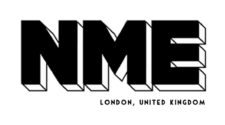
The upshot of the arrival, finally, in America of what the colonials quaintly term new wave music is that what was deplored and ignored is nowadays a viable part of any self respecting label’s roster. Two years ago their worst fear was to pass on the next ELO, now it’s to pass on the next Cheap Trick.
No wonder disco has been so phenomenally popular Stateside; they’re crying out for fresh excitement, just as a diet of hamburgers will make you, sooner or later, crave real meat. I therefore place my bet now that The Clash will, one day, be enormous. Not any day soon though, because, like The Reds, and unlike The Police, they don’t make singles. They can make fine rock songs, but not singles. And they are the short cut.
The Reds, a Philadelphia four piece whose Anglophilia, a trait of so many US bands, leans towards the recent English developments, achieved their prominence via two superb sides of hard rock thrash out late last year under their own steam. Evidence that, as over here, the self-made single figures strongly as a source of raw material for music machinery.
Both those songs, Self Reduction and Victims turn up on The Reds first self-titled album in pride of place amongst eight samples of urban metal despair from the pen of guitarist and vocalist, Rick Shaffer.
His concerns are apocalyptic: boredom and social breakdown. The standard subject of punk of latter-day definition expressed in language that — whilst not bearing a wildly original relevance to the situation — nimbly sidesteps all the obvious clichés.
The music’s intentions are clear, the territory well-defined; a simple, purposeful drive built on the classic ’70’s chassis and designed to rock out hard, which it does, even if the material is not always as instant as the oeuvre demands.
If you close your eyes and pretend you haven’t heard it before it’s pretty good; if you haven’t heard it before it’s great, probably the best US hard rock since Aerosmith’s “Rocks.” A drop in the British ocean, but a beacon in the American night.
∎ New Musical Express, London, United Kingdom, 1979
Andy Courtney, Sounds Magazine, United Kingdom
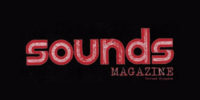
Death is the only way to go and if you can glamorize the ultimate solution to excess leisure time, allude to Socialist Slammerers Against The N-N-N . . . And be a Commie plugger you’ve got the Alternative Chart sussed. Slightly Television, but slightly better than most channels of aural communication. Makes absolutely no mistakes. This weeks’ Single Of The Year.
- Andy Courtney, Sounds Magazine, United Kingdom, 1979
Roy Trakin, The Village Voice

THE REDS AT HURRAH – NYC
The second half of the HURRAH twin bill, The Reds, was delayed by the first act, Pirates, due to equipment hassles. As a result, this highly promising band did not hit the stage until well over 90 percent of the audience’s bedtime. Still, Philadelphia’s Reds put on a credible show in the face of adversity. Although some of their heavy metal histrionics have sparked comparisons to Aerosmith, The Reds remind me more of the Cars in their shrewd amalgam of progressive experimentation and pop hooks.
Shows like this one, though, where record company pressure treats The Reds like so many gadflies, brushing them aside and forcing them to wait until 4 a.m. to play their first set, can cause even a young band to lose it’s hair. The record industry of today conservatively prefers to sign veterans as it ignores newcomers. So, while the Pirates may be red hot, you’ll excuse me for saying I’m high on The Reds. There’s nothing wrong with looking back, but, if you’ll notice, English rock ‘n roll is slowly losing its reputation for musical innovation to the Americans. It may have taken the English to turn us on to our own music, but we’ve more than caught up. Groups like The Reds prove we’re moving ahead.
∎ Roy Trakin, The Village Voice, NYC, 1979
Robert Palmer, The New York Times

THE REDS IN CONCERT AT HURRAH
Sham 69 did churn out a solid dance beat. But so did The Reds, who opened the show, and to these ears were much better. The Reds’ most impressive achievement is their group sound, which blends Rick Shaffer’s guitar, and Bruce Cohen’s keyboards into an interestingly textured drone. Short, repeating guitar and keyboard figures, seem to rise out of and then disappear back into this drone, while Mr. Shaffer sings his urban vignettes with affecting intensity and the rhythm section provides both punch and lift.
The Reds didn’t come across with the precision they demonstrated on their first album, which was one of the more promising rock debuts of the year. But they were fighting a poor sound mix, and at least their style and spirit remained intact.
- Robert Palmer, The New York Times, 1979
Eric Abrahamsen, Dazed Magazine, Western Australia, 2008

Releasing a stunner of a debut in 1979, Philadelphia’s The Reds were a bright spot in a new wave scene that was just starting to pick up speed, although their day in the major sun was deceptively short. Tour slots with The Police, Joe Jackson, Public Image Ltd, and the Psychedelic Furs, as well as critical praise from the music press heavies of the time couldn’t stop the record from tanking. A follow-up and highly collectible 10″ EP, which included a cover of The Doors Break On Through, failed to drum up further interest, and A&M promptly dropped the group. You are probably thinking the end of the road right? No so fast, enter Canada’s Stony Plain label and two further albums, and again the critics fell over themselves praising The Reds. Another album on Sire, some work providing music for the “Miami Vice” television show, and a few movie soundtrack appearances, including “Band Of The Hand,” “Manhunter,” and “Nightmare On Elm Street 2,” followed up with solo and session work, and incredibly The Reds are still releasing albums to this day. So why aren’t they a bigger name than their biography would suggest?
Perhaps it’s because The Reds continued to reinvent themselves, break new ground musically, and have been difficult to categorize from day one. A good example of this is the cover of their debut. Despite looking like a skinny tie power pop album, The Reds opening salvo is a much darker record of post punk pop and art rock tendencies, with thick wedges of dense heavy metal that melted together into one helluva record. This was the same type of sound Joy Division was working at, although The Reds were far less depressing and did keep it in a tuneful pop context for the most part, as on Luxury, which sounds like The Cars on downers. Joey is the Velvet Underground meets Aerosmith, while Lookout is a simply devastating work with Deep Purple-ish grinding organ, crashing guitar, Jim Morrison influenced vocals, and brain buzzing pre-Jesus And The Mary Chain dissonance. Side two is slightly weaker with a stretch of pop tunes that in the hands of any other band would be forgettable and bland, but we are talking about The Reds here, and they do their best to fuzz things up with plenty of angst along the way. The closing track on this side, Self Reduction, is the winner, again combining Doors-like aggression with Jon Lord styled organ runs, and I was recently surprised to find the tune received some airplay although it didn’t help to shift many copies which was truly a shame.
This has remained one of my favorite and most listened to records over the years, that sadly has never received its due in the digital format. How much Dazed readers will enjoy The Reds depends on how much you appreciated the early new wave before it became just another major label rouse.
Eric Abrahamsen, Dazed Magazine, Western Australia, April 8, 2008
Aleks Shaulov, Sonic Crapshoot Blog, In The Used Bins, 2014

This jam pops up in the bins all the time. Seen it priced between $3 and $8. I’ve seen two versions of it — one on bottle green vinyl, and one on good ol’ black. I first was introduced to this record by my comrade JG and have since played it at home and at my random DJ sets around Columbus. I did some research and found out some interesting stuff. The Reds were started in Philadelphia, PA by Rick Shaffer (guitar, vocals) and Bruce Cohen (keyboards) in the 70’s and, from what I gather, are still active in some form or another. They have worked with famous director/producer Michael Mann, who used their music in a few episodes of Miami Vice, as well as some movies. They have also worked on numerous movie and theater scores, both as a band and as individuals.
Their self-titled first LP, which came out in 1979 on A&M, is my favorite work of theirs. I also want to point out that the cover artwork pretty much suggests what the listener is in for, in a good way. A great blend of mid-tempo angular punk rock and catchy synth new wave, it’s got great songs all over it, kicking off with the sweet intro to the opener Victims, which starts with a straight drum beat before the rest of the band comes in framed by the radio-dial-like synths. Rick Shaffer’s vocals project every bit of emotion, expressed in the lyrics. A great singer! Also, hats off to his sweet riffs. My favorite tune on here is the closer, Self Reduction. It’s one of the slower and darker numbers on the record. But it’s also the one where Cohen delivers my favorite synth line of almost any out there. It’s simple and somehow perfect.
I often wondered why this record is not as revered as some of its contemporaries. And I’m not talking about the wider audiences here. But you know, your average punk who’s got some taste, I feel, should be all over this. This noise is not unlike some really early Cure, Plastic Idols, or even Devo. I have bought copies of it for a couple of my friends, who were pretty excited upon hearing it. I hope more people check this jam out! Also, if you dig this LP check out their subsequent releases, a more aggressive Stronger Silence (1981), and a darker Fatal Slide (1982). There’s also a 10” green vinyl Green With Envy that came out on A&M the same year as the self-titled, which has two songs from the album, and one that’s not. It also has a very cool take on the Doors’ Break On Through. Che-che-che-eck it out!
∎ Aleks Shaulov, Sonic Crapshoot, In The Used Bins, February 24, 2014
Tim Stegall, Alternative Press, 2020

For every bona fide punk legend, there’s a stack of bands who never got their due. Here’s a great record from a band you may have missed.
Philadelphia’s Reds shared some similarities with the Brains, placing Bruce Cohen’s keyboards alongside Rick Shaffer’s coruscating yelp and slashing post-James Williamson guitar. They also signed to a major, this time A&M Records. Joe Jackson producer David Kershenbaum eventually recorded Duran Duran. Meanwhile, he applied some new-wave synth sheen to these punks, subduing Shaffer’s raw six-string attack, but not his sawtooth vocals. He succeeded in bringing out the dour moodiness of tracks such as “Self Reduction,” while opener “Victims” rocked like murder.
Listen to “VICTIMS” track 1 on the band’s self-titled debut album on A&M.
Tim Stegall, Alternative Press, 15 Forgotten Punk Albums You’ll Wish You Discovered Sooner, 9/18/2020
